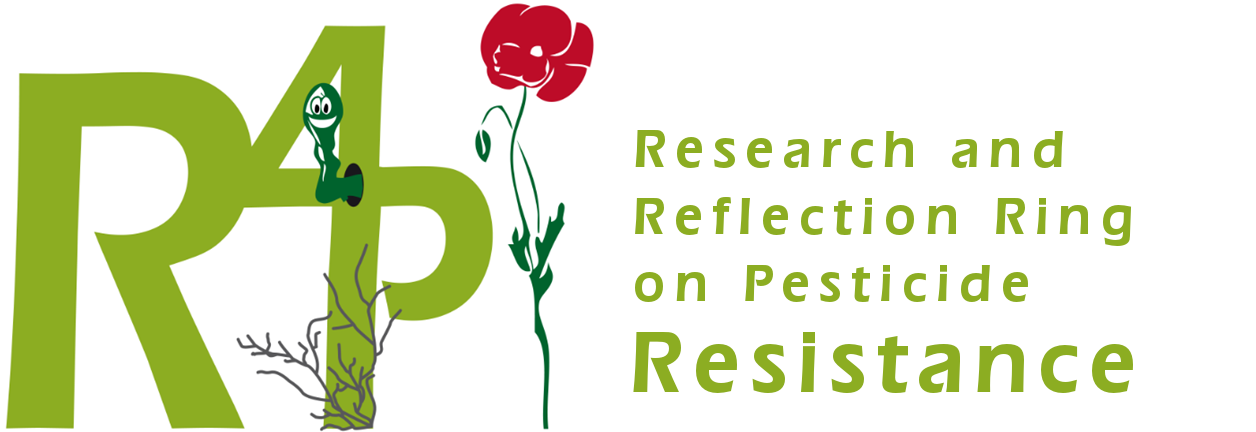Official texts and informations on resistance to PPPs.
Regulation (ec) No 1107/2009 of the european parliament and of the council concerning the placing of plant protection products on the market
This is the ground regulation. Article 56 refers to the obligation to inform the Member States of a reduction in efficiency, in particular, due to resistance.
The following two regulations specify the information to be given for the approval of active substances and the placing on the market of commercial specialities.
Commission Regulation (EU) No 284/2013 of 1 March 2013 setting out the data requirements for plant protection products, in accordance with Regulation (EC) No 1107/2009 of the European Parliament and of the Council concerning the placing of plant protection products on the market Text with EEA relevance.
The annex to the regulation specifies information on the occurrence, or possible occurrence, of resistance (section 6.3.6).
Standard PP 1/213 (4) Resistance risk analysis
An EPPO (European and Mediterranean Plant Protection Organisation) standard specifies the possible modalities for resistance risk assessment and management modalities to be proposed in the context of placing plant protection products on the market.
Directive 2009/128/EC of the European Parliament and of the Council of 21 October 2009 establishing a framework for Community action to achieve the sustainable use of pesticides (Text with EEA relevance)
Annex III: General principles of integrated pest management. It mentions the need for resistance risk management in the preparation of national plans to reduce risks and impacts of pesticides.
LAW n° 2014-1170 of 13 October 2014 for the future of agriculture, food and forestry. Title III: Food Policy and Sanitary Performance
Articles 50 to 54 set out various measures concerning plant protection products, concerning advice, integrated protection, biocontrol, certificates of economy of plant protection products, product traceability, transfer of placing on market authorizations to ANSES (French Agency for Food, Environmental and Occupational Health & Safety) , controls and sanctions on falsification, protection of vulnerable persons and establishment of a phytopharmacovigilance system.
Monitoring of resistance is part of phytopharmacovigilance. The following two texts specify the organisation and implementation of the phytopharmacovigilance system.
Decree of 24 November 2016 on phytopharmacovigilance
Amending various other provisions of the Rural Code and Maritime Fisheries relating to plant protection.
Order of 16 February 2017 on organisms participating in phytopharmacovigilance
The Ecophyto plan aims to gradually reduce the use of plant protection products in France while maintaining economically efficient agriculture (December 2015).
Resistance to plant protection products is mentioned in several axes and actions of the Ecophyto plan.
- Axe 1: Acting today and changing practices
5) Improving the « Bulletin de santé du végétal » (Plant Health bulletin)
“Monitoring of the unintended effects of treatments on biodiversity and monitoring and characterisation of the development of resistance in populations of pests and weeds to active susbtances will be strengthened, including by expanding the existing unintended effects observation network.”
- Axe 3: Assessing and mastering risks and impacts
10) Establish a phytopharmacovigilance system
14) Relying on indicators of use, impact and evolution of practices.
Calculate impact indicators: toxicity of products, impacts on health and biodiversity, resistance of pests and weeds.
“The risk and impact indicators developed in the previous Ecophyto plan will be implemented in order to better assess the toxicity of plant protection products, their impact on health, biodiversity and air quality, as well as on the dynamics of resistance development by pests and weeds or on the evolution of harmful or invasive species.”
It provides information on resistance accessible through its search engine.
An annual technical instruction issued by the Ministry of Agriculture (Directorate-General for Food) specifies the organisation of plant epidemiosurveillance and monitoring of the unintended effects of agricultural practices (biodiversity and resistance to plant protection products) in the context of the Ecophyto plan.
Managing resistance: common technical notes (specific to France)
These technical notes are based on the results of the monitoring plan and information from the field. The latest common technical notes on resistance in vineyards and field crops are available on the Ecophytopic portal (section « notes nationales »).

